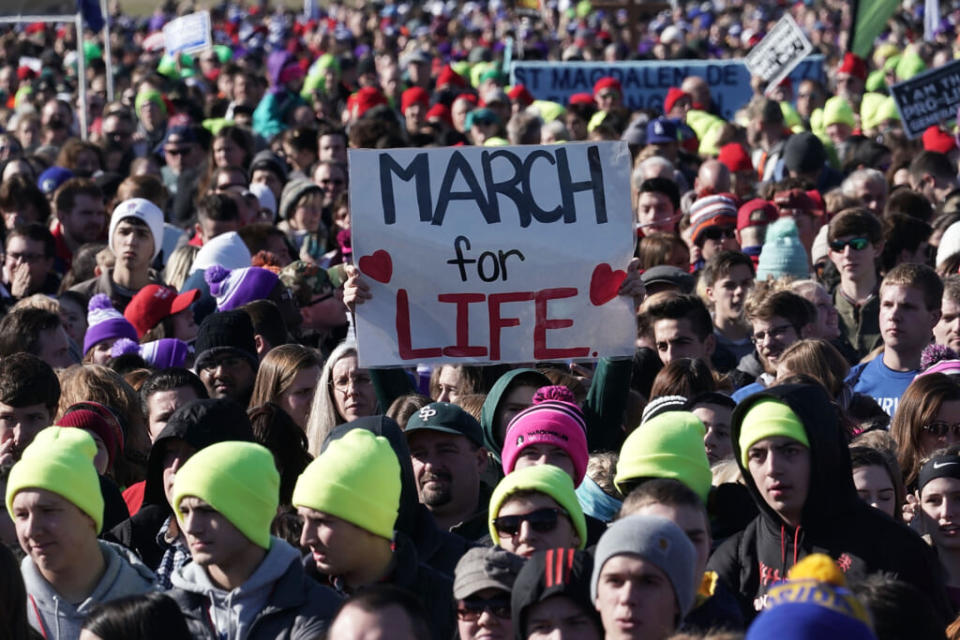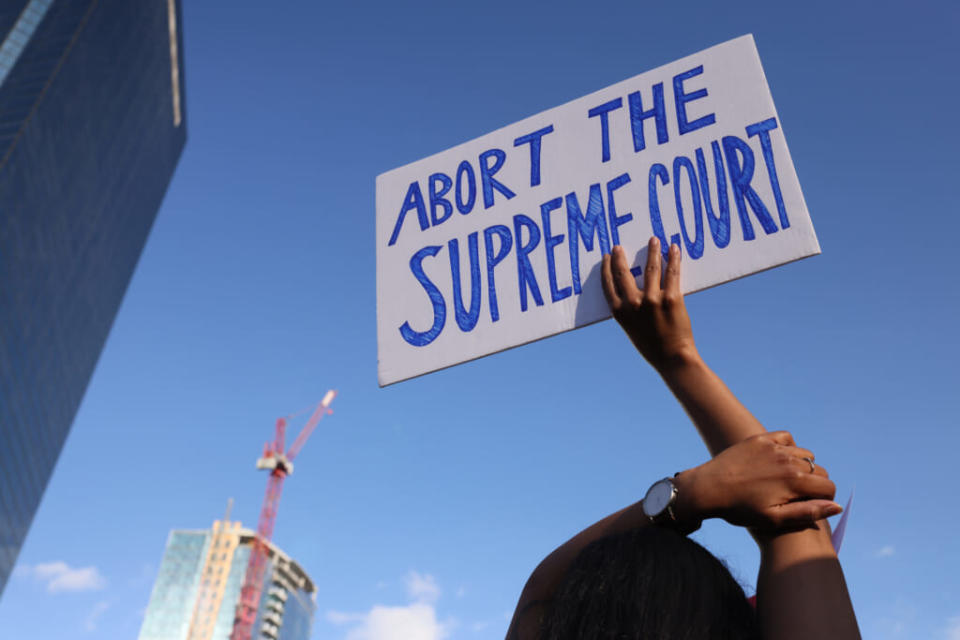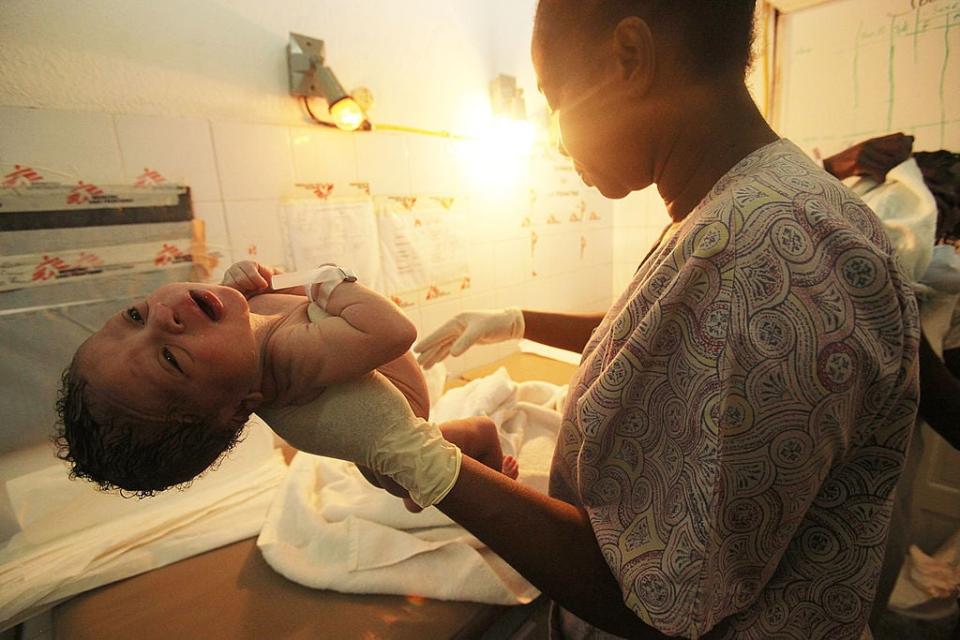Everything you need to know about Roe v. Wade
- Oops!Something went wrong.Please try again later.
It’s been almost a year since the Supreme Court repealed the Roe v. Wade decision. Let’s take a look at the history of the case itself as well as its repeal and the fallout.
Last year, the Supreme Court overturned Roe v. Wade, the landmark case that secured the right to an abortion in the United States. Since that time, the question of abortion access has fallen to the states, with laws across the country varying widely.
As we approach the anniversary of Roe v. Wade being overturned, let’s look back at the original case as well as the effects the repeal has had in the past few months.

The 1973 case of Roe v. Wade
In Texas in the 1960s, abortion was only legal if a mother’s life was in danger. So when Norma McCorvey, who would be referred to in her later lawsuit as “Jane Roe,” became pregnant after having already given up two babies for adoption, she tried to find an illegal abortion. Failing that, she sued Henry Wade, the district attorney of Dallas County, with the help of attorneys Linda Coffee and Sarah Weddington.
McCorvey found initial success in a Texas district court, which ruled that abortion bans violated citizens’ right to privacy. But Wade was still going after doctors who performed abortions, and so the case found its way to the United States Supreme Court.
In the case of Roe v. Wade, Justice Harry A. Blackmun wrote in the majority opinion siding with McCorvey that banning abortions did violate the right to privacy. The court noted, however, that states could argue that they had a “compelling interest” in the life of any fetus that had reached viability. Thus, the court made abortion bans illegal before viability while also upholding abortion access when a mother’s life was in danger.
Roe v. Wade and the implied right to privacy
In arguing for the right to an abortion, the Supreme Court outlined a right to privacy. Although this right isn’t enumerated in the Constitution, Blackmun argued that this right is implied in the 14th Amendment. This amendment grants a right to due process, which keeps states from controlling the private lives of their citizens.
Backlash and attempts to repeal
Almost as soon as Roe v. Wade had been decided, groups opposed to abortion access began their attempts to repeal the decision. Within three years, Congress passed the Hyde Amendment prohibiting government funds from being spent on abortions, barring exceptional circumstances such as rape or danger to the life of the mother. The exceptions that the Hyde Amendment outlined became the basis for future attempted abortion bans.

Later, in the case of Planned Parenthood of Southeastern Pennsylvania v. Casey, the standard of abortion access set by Roe v. Wade was again limited by an “undue burden” principle. The Planned Parenthood case allowed for abortion bans as long as those bans did not “place substantial obstacles in the path of a woman seeking an abortion before the fetus attains viability.”
Abortion continued to be a galvanizing issue, with multiple states attempting to enact bans that would pass the “undue burden” litmus test. The abortion question was such a polarizing issue that, when President Barack Obama was trying to pass the Affordable Care Act, he specifically compromised to allow abortion to be banned under ACA plans.
The fight to appoint Supreme Court justices
As the attempt to repeal Roe v. Wade became a rallying cry politically, it was common for politicians to focus on the Supreme Court. Because Supreme Court appointments are for life, every time a seat opened up, the appointment process became increasingly contentious.
Things came to a head, then, when Senate Majority Leader Mitch McConnell announced in 2016 that he would not allow a confirmation hearing on President Obama’s nominee to the Supreme Court. McConnell claimed that he wanted to wait until the 2016 election was over, but in 2022, he admitted that this decision directly led to the repeal of Roe v. Wade.

During the 2016 campaign, Donald Trump swore to nominate judges who would overturn Roe v. Wade. When he took office in 2017 and, during his four-year term, was able to nominate and get confirmed Neil Gorsuch for the empty seat Obama had tried to fill plus two other Supreme Court justices, abortion rights activists braced themselves.
The 2022 repeal of Roe v. Wade
On June 24, 2022, the Supreme Court heard the case of Dobbs v. Jackson Women’s Health Organization. The case started in Mississippi, which in 2018 adopted the Gestational Age Act, banning abortions after 15 weeks. Jackson Women’s Health Organization, which was the last abortion clinic in Mississippi, sued the state after the act was passed, and the case eventually ended up before the highest court in the nation.
In a 6-3 majority, the Supreme Court overturned Roe v. Wade, with Justice Samuel Alito writing for the majority that the Roe decision was “egregiously wrong.” Justices Stephen Breyer, Sonia Sotomayor and Elena Kagan, the three liberal justices on the court, wrote a joint dissent.
“With sorrow — for this Court, but more, for the many millions of American women who have today lost a fundamental constitutional protection — we dissent,” the three wrote.
Backlash and protests
Abortion-rights activists had been preparing for this ruling for over a month. A leak from within the Supreme Court revealed that the court was planning to overturn Roe v. Wade; a draft of the majority opinion circulated quickly online once it was leaked.
Immediately after the leaked draft surfaced, protests erupted, including some at the homes of the justices themselves. The protests continued after Roe was overturned, though many protests have since moved to the states as the question of abortion has fallen to them to decide.

States that have banned abortion since the repeal of Roe v. Wade
Since Roe v. Wade was overturned, states have seized the opportunity to limit access to abortion. Already, 14 of them have banned abortions, with limited exceptions, and even more states have passed laws that set gestational limits on when abortions can be performed.
According to The New York Times, which keeps track of where abortion is banned or limited, the 14 states with near-complete bans are: Alabama, Arkansas, Idaho, Kentucky, Louisiana, Mississippi, Missouri, North Dakota, Oklahoma, South Dakota, Tennessee, Texas, West Virginia and Wisconsin. Very few of those states have exceptions for even cases of rape and incest.
Arizona and Florida have banned abortions after 15 weeks, Utah after 18 weeks and North Carolina after 20 weeks. The strictest ban based on gestational age is Georgia’s, which starts at six weeks, though Florida is attempting to pass a similar law.
What does life in a post-Roe state look like?
While these abortion bans are considered victories for those who opposed Roe, after a year of watching states enact abortion bans, the residents of those states are now seeing the repercussions of a lack of abortion access.
For example, doctors and medical students are fleeing states where abortions have been banned. The flight has been so dramatic that one hospital in Idaho was forced to announce that it could no longer provide labor and delivery services. And as medical professionals leave, citizens in those states are left with worsening care.

Those who do find care are facing worse outcomes, too. A study published by the Gender Equity Policy Institute (GEPI) found that patients living in a state that had banned or restricted abortion statistically had much worse outcomes in maternal and infant health than patients in states where those restrictions weren’t in place. And with 7 in 10 Black women living in a state with abortion restrictions, the study found that Black women were almost three times more likely to die from pregnancy-related causes than white women were.
Abortion bans are even affecting where people decide to go to school. A study from Gallup and the Lumina Foundation found that 72% of students looking ahead to college said that abortion laws in the state affected whether or not they wanted to attend college there.
Now that Roe v. Wade has been repealed, we will continue to see states deciding the question of abortion access and will also see how those states fare in the long term. For now, as the possibility of a nationwide abortion law remains likely out of reach in a split Congress, advocates on both sides of the debate will focus their attention locally.
The post Everything you need to know about Roe v. Wade appeared first on TheGrio.

